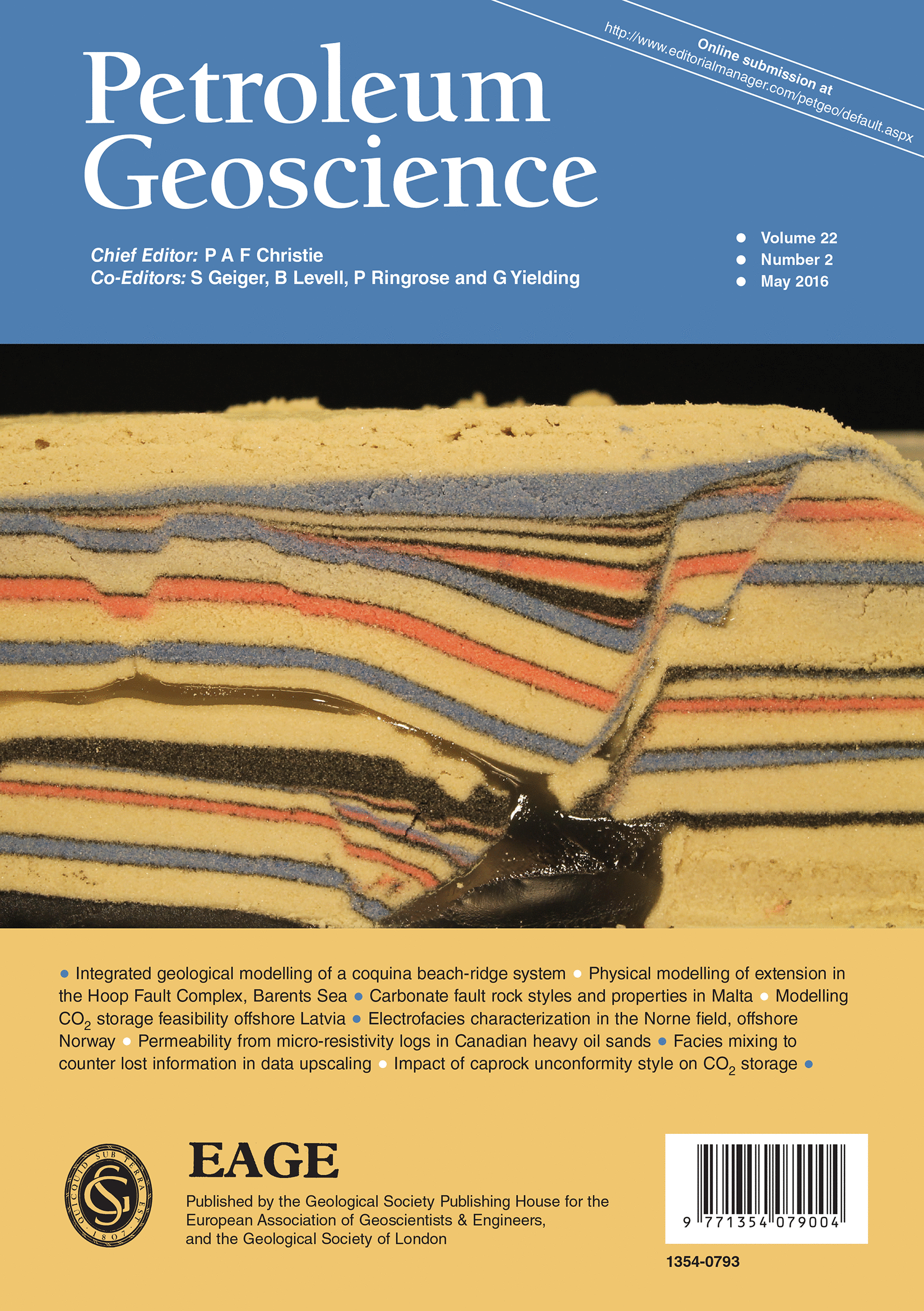
Full text loading...
Selected carbonate-hosted normal fault zones on the island of Malta have been analysed to assess the potential impact of fault rocks on fluid flow (i.e. fault seal). Fault displacement ranging from <1 to 90 m has allowed systematic investigation of the evolution of fault-rock types, distribution and properties with increasing displacement. The focus has been on examining locations of fault-rock formation, because this significantly affects fluid-flow pathways across and along faults, and the types of fault rock formed. The location of fault rock is dependent on the fault-zone architecture. Fault zones on Malta have architectures with multiple slip surfaces within weaker carbonate layers, distributing fault rock onto several slip surfaces. This distribution prevents formation of a continuous fault core, particularly at lower displacements (<30 m). The discontinuous fault core causes these faults to be transmissive, allowing fluids to flow across the fault. The hydraulic behaviour is also a function of the deformation mechanisms active in the formation of fault rocks. Lithological heterogeneity in a faulted carbonate succession leads to a variety of deformation mechanisms, generating up to nine different fault-rocks types with a range of deformation microstructures along a single slip surface. The type of fault rock formed is a function of the host rock texture, juxtaposition, displacement and deformation conditions. Each deformation microstructure has different petrophysical properties, causing the porosity and permeability to vary along-strike and downdip on any slip surface, affecting the fault’s hydraulic behaviour. The extent of the poroperm variation depends on lithofacies juxtaposition and displacement: juxtaposition of similar lithofacies reduces poroperm variation and juxtaposing different lithofacies at higher displacements (>30 m) increases the range of poroperm.

Article metrics loading...

Full text loading...
References


Data & Media loading...

